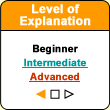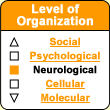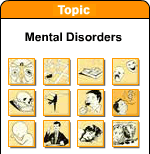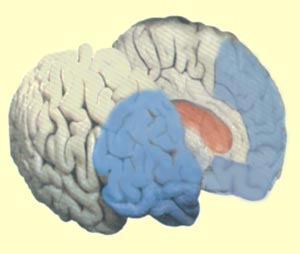Brain imaging studies have shown that patients suffering
from depression have the same patterns of brain activity as
schizophrenics who have negative symptoms (that is, who are
introverted and apathetic rather than eccentric and agitated).
The parts of the brain that are less active in both diseases
(such as the frontal
lobes) are the ones recognized as making people
feel that they are in control of their own actions.
Similarly, both paranoid schizophrenics and people in the manic phase of bipolar disorder display hyperactivity in the prefrontal cortex. In the former group, this hyperactivity is expressed as a tendency to draw connections between things and events but to give these connections a hostile connotation. In the latter group, the connections have more of a euphoric effect. |





